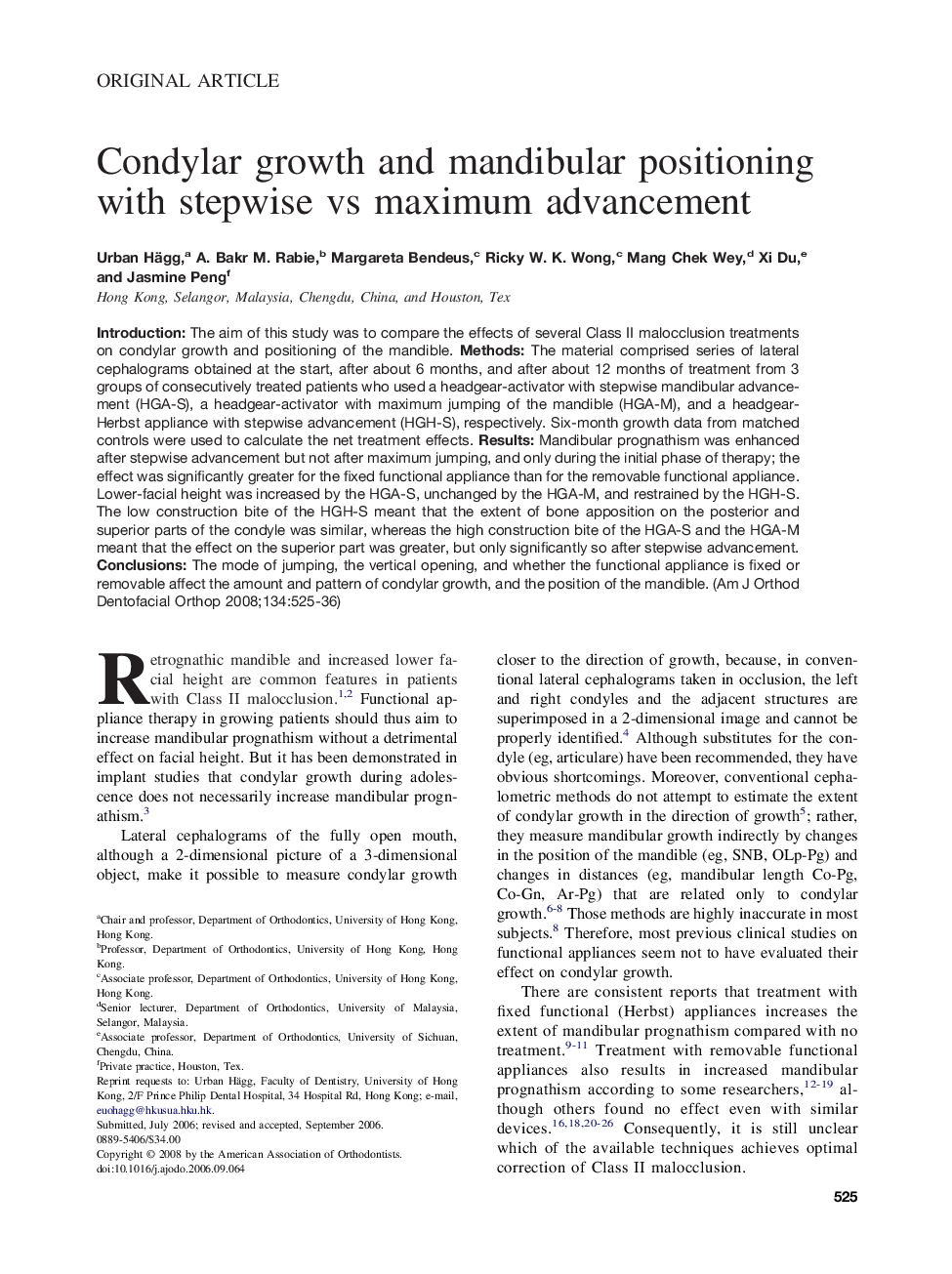| Article ID | Journal | Published Year | Pages | File Type |
|---|---|---|---|---|
| 3117916 | American Journal of Orthodontics and Dentofacial Orthopedics | 2008 | 12 Pages |
Introduction: The aim of this study was to compare the effects of several Class II malocclusion treatments on condylar growth and positioning of the mandible. Methods: The material comprised series of lateral cephalograms obtained at the start, after about 6 months, and after about 12 months of treatment from 3 groups of consecutively treated patients who used a headgear-activator with stepwise mandibular advancement (HGA-S), a headgear-activator with maximum jumping of the mandible (HGA-M), and a headgear-Herbst appliance with stepwise advancement (HGH-S), respectively. Six-month growth data from matched controls were used to calculate the net treatment effects. Results: Mandibular prognathism was enhanced after stepwise advancement but not after maximum jumping, and only during the initial phase of therapy; the effect was significantly greater for the fixed functional appliance than for the removable functional appliance. Lower-facial height was increased by the HGA-S, unchanged by the HGA-M, and restrained by the HGH-S. The low construction bite of the HGH-S meant that the extent of bone apposition on the posterior and superior parts of the condyle was similar, whereas the high construction bite of the HGA-S and the HGA-M meant that the effect on the superior part was greater, but only significantly so after stepwise advancement. Conclusions: The mode of jumping, the vertical opening, and whether the functional appliance is fixed or removable affect the amount and pattern of condylar growth, and the position of the mandible.
